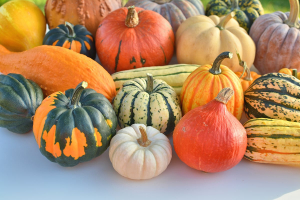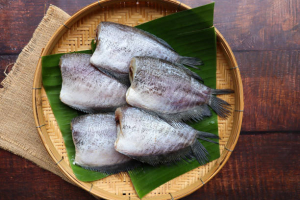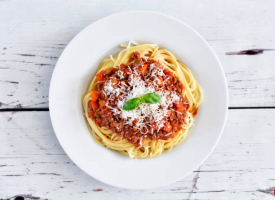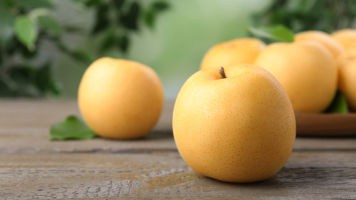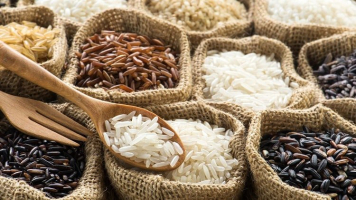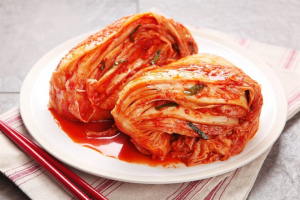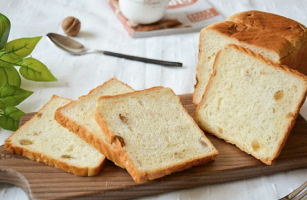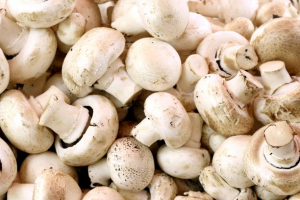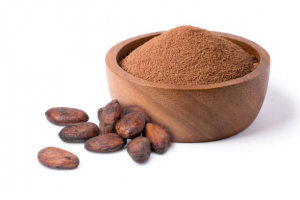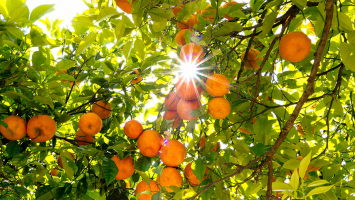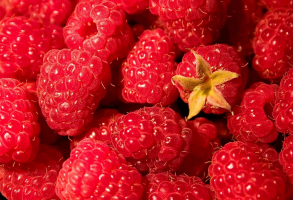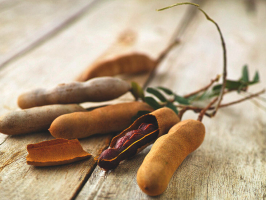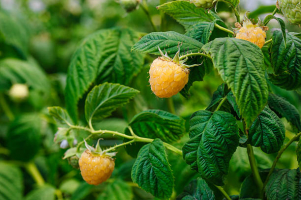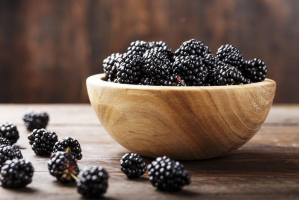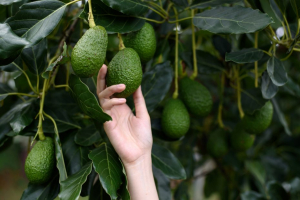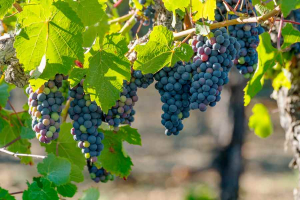Top 10 Most Delicious Types Of Grapes
Grapes are one of the world's oldest fruits, going back to the times. Today, they're still a very popular fruit. According to the University of Arizona, the ... read more...average person consumes eight pounds of grapes per year. The reason for this is simple: grapes make an excellent snack. They're sweet and juicy, with a delightful crunch. Let's with Toplist make a list of the Most Delicious Types Of Grapes!
-
Moon Drop grapes were developed in 2004 by fruit geneticist David Cain of the International Fruit Genetics firm and Jack Pandol of The Grapery® in Bakersfield, California. The grapes are farmed in California's San Joaquin Valley and can be bought in local supermarkets around the country, although they have a very short season and are in poor supply.
Moon Drop grapes range in size from medium to large, with elongated, oblong, or tubular shapes that grow in compact clusters on fleshy green stems. The dark sapphire skin is smooth and practically black, with a glossy shine and a distinctive dimple on one end. The grapes are so crisp that they may be cracked in half and reveal a translucent green seedless pulp inside. Moon Drop grapes are sweeter than regular black grape types, with just enough tannins to counterbalance the luscious sweetness.
Moon Drop is well-deserving of the title of "king of grapes". This moniker is derived not only from the fruit's wonderful flavor. This fruit, on the other hand, has a very high nutritional content. When compared to regular fruits, the nutritional components inside will be multiplied by a factor of ten. The body can tolerate a wide range of necessary nutrients once they've been used. Antioxidants, flavonoids, manganese, and vitamins A, C, and K are high in Moon Drop grapes.
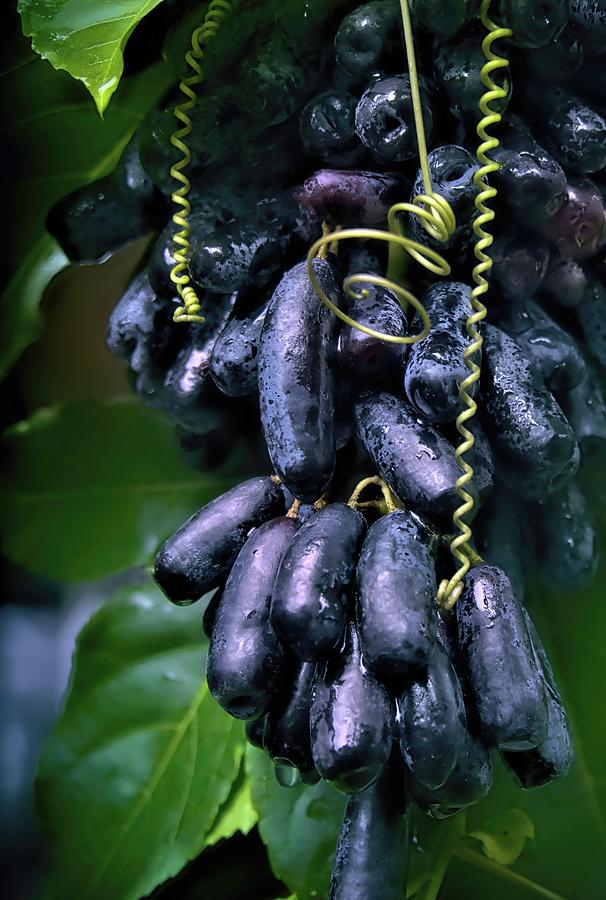
Moon Drop grapes 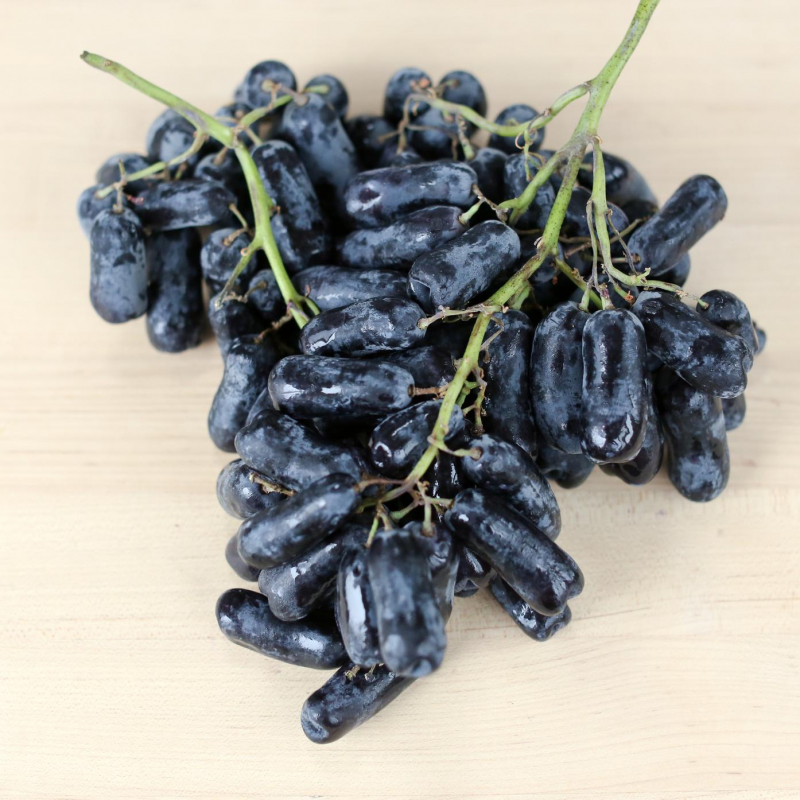
Moon Drop grapes -
Cotton Candy grapes is a sweet white table grape type with a flavor similar to cotton candy. Horticulturist David Cain and his team at Bakersfield, California-based fruit breeder International Fruit Genetics produced the grapes (IFG). Grapery, a California-based farmer, first started selling the grapes in 2011.
Cotton Candy grapes are grapes that taste like cotton candy, as the name implies. Cotton Candy grapes may appear like an ordinary green grapes, but they're just as popular as ever, and they actually taste like the spun-sugar fair delicacy. This grape has almost little tartness, according to Cain, and the unusual grape varietals they cross-bred were chosen for their vanilla-like flavor. The grapes themselves have around 12% more sugar than regular table grapes, but a fraction of the sugar content of raisins.
Cotton candy grapes, like regular grapes, have a long-range of health advantages. They can help you maintain a healthy blood sugar level, deliver a high dosage of antioxidants, reduce inflammation, improve brain function, and even fight cancer cells and bacteria. They're also low in calories and include a variety of nutrients that are beneficial to your health.
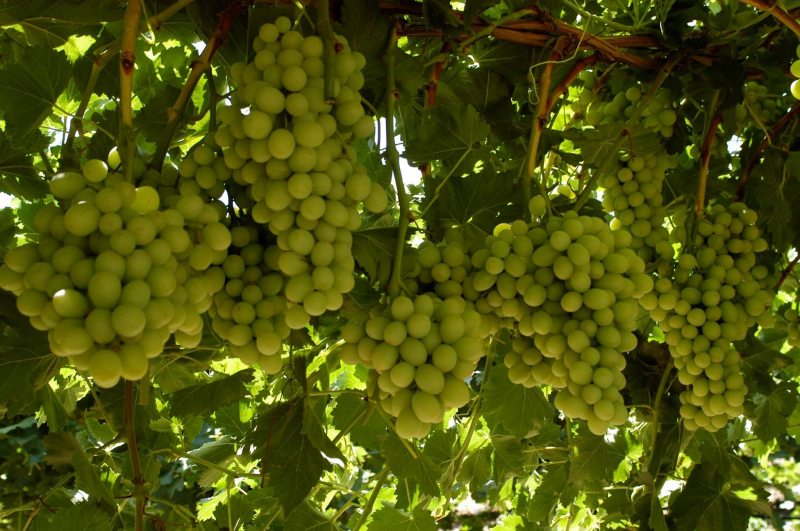
Cotton Candy grapes 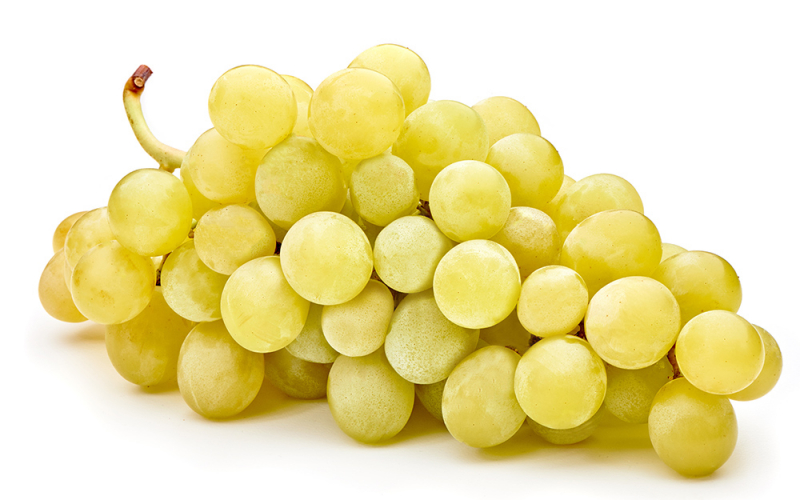
Cotton Candy grapes -
Californians are familiar with the Thompson Seedless grapes, which are commonly offered as "table grapes" among other popular types including Flame, Sultana, and Muscat. It was named after William Thompson, a Scottish immigrant who popularized the variety in the mid-1870s in California. The grapes came from a cultivar known as Lady de Coverly, which he obtained from a New York nursery.
Thompson Seedless grapes are the most common type of green table grape sold at grocery stores. In fact, it’s the most popular type of grape in the United States. An oval-berried, pale to amber green, seedless variety of grape widely cultivated worldwide for table use and for drying as raisins. Thompson Seedless is very sweet and produces thin clusters of large berries in large, long bunches. This is currently the number one variety grown in Australia.
Thompson Seedless Grapes is a calorie-dense fruit. Each cup contains 104 calories, therefore one to two cups can be eaten as a reasonably sized snack. The majority of those calories come from carbohydrates, with 27 grams of total carbs per cup of grapes, including about 1.5 grams of fiber. Grapes, like most fruits, are low in protein and fat, with only 1 gram and a quarter gram per serving, respectively. Because carbohydrates are your body's preferred source of energy, grapes can be a healthy method to obtain an energy boost, even if they don't have the best nutritional profile.
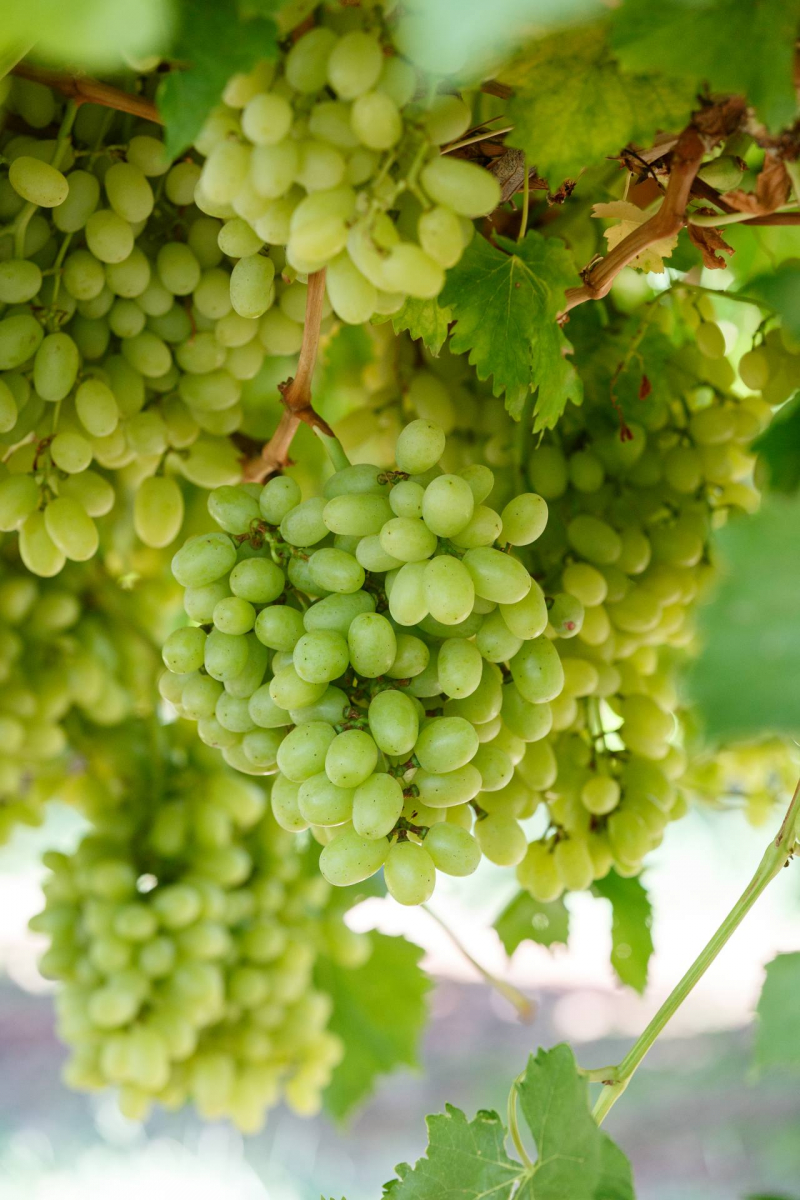
Thompson Seedless grapes 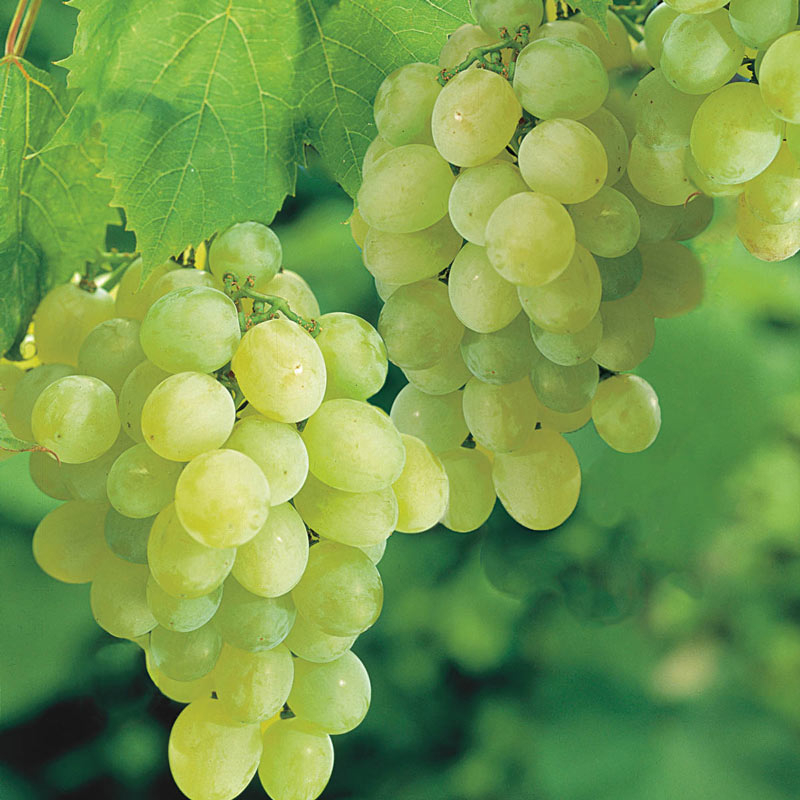
Thompson Seedless grapes -
The USDA obtained 'Black Monukka' from England, where it had been acquired from India, around 1910. Its real origin is unknown; however, it is considered to have sprung from the name of a Persian elongated grape called 'Munaqqa', which means "raisin". Because of its larger raisin size, darker color, and more seed traces in comparison to 'Thompson Seedless', it has never been popular in California's conventional raisin markets. Its unusual properties, such as blackish hue, soft skin, and trademark rich flavor, make it popular in niche markets such as health food stores.
The Black Monukka is a fully seedless black table grape. It has soft skin and a deliciously crisp, sweet flavor. Its unusual properties, such as blackish hue, soft skin, and trademark rich flavor, make it popular in niche markets such as health food stores. Because of its sweet taste and juicy flavor when dried, this grape is a popular choice for raisins.
Sugars (glucose and fructose), vitamins (ascorbic acid, riboflavin, thiamin, pyridoxine), dietary fibers, and minerals are high in Munakka (zinc, phosphorous, iron, magnesium, calcium, potassium). Munakka also contains flavonoids, resveratrol, epicatechins, phytoestrogens, and hydrocinnamic acids, among other phytochemicals (plant-derived compounds). Munakka also contains vitamin C and antioxidants, which may aid in the maintenance of youthful skin.

Black Monukka Grapes 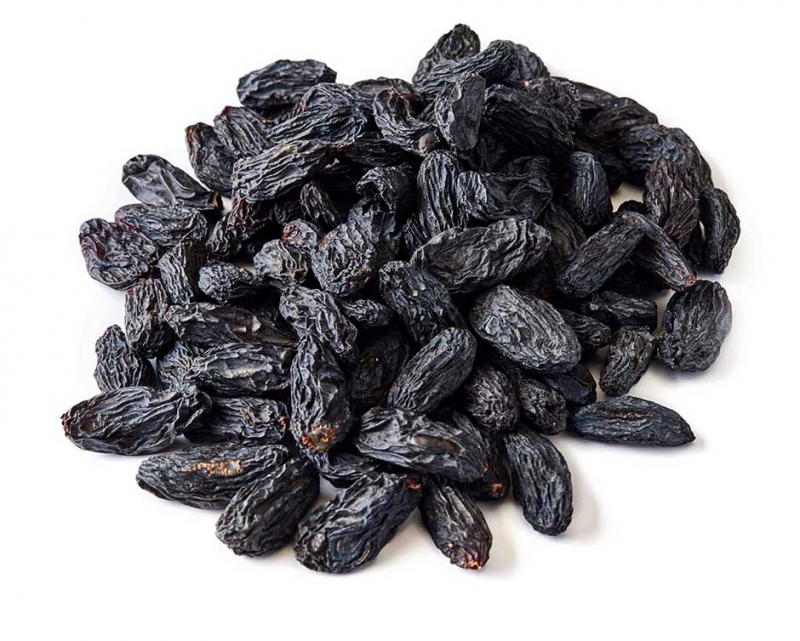
Black Monukka Grapes -
The University of California discovered the Red Globe cultivar in the 1950s, and it has been cultivated in Italy since the 1980s. It is the second most common cultivar in Sicily and can be found in supermarkets and fruit and vegetable markets. Because many consumers in Western Europe have turned their backs on pips, Red Globe grapes are most popular in Asia, the Middle East, and Eastern Europe. A strong pink coloration is highly desired in China.
Red Globe is a grape with red seeds. The berries are huge and spherical, and the color ranges from light pink to dark crimson. The texture of the fruit is meaty, robust, and crispy, with plenty of juice. Although there is a fair level of sweetness and low acidity, the flavor is muted. True, each berry has some pips, but there is a technique to eating these delectable bombs without breaking the seed husk with your teeth.
Red globe grapes are high in nutrients that can boost your immune, improve your skin and hair health, and strengthen your bones. Red globe grapes are high in Vitamin C, A, B6, potassium, calcium, iron, and phosphorus, which can help you and your family stay healthy. Red globe grapes are also a fruit that you can have as a mid-day snack if you're trying to lose weight. They have fewer calories than green grapes and might help you keep track of your calorie intake throughout the day.
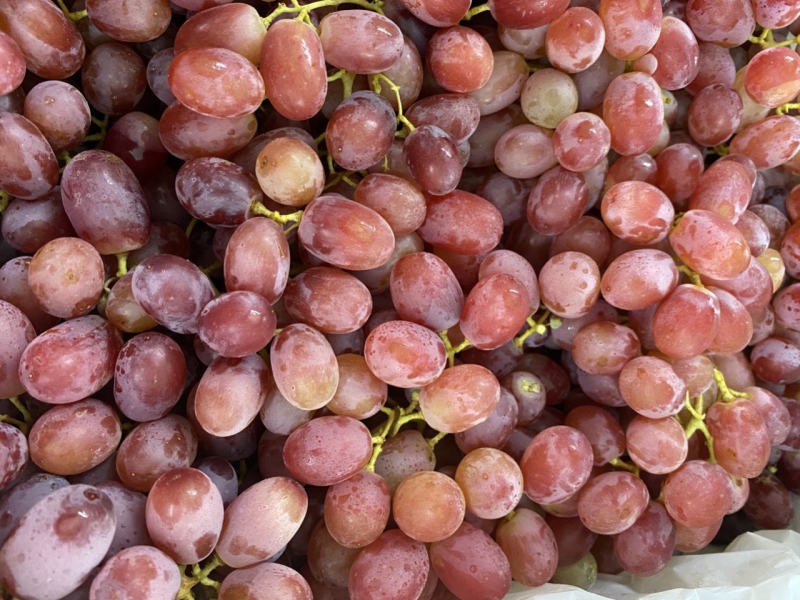
The Red Globe 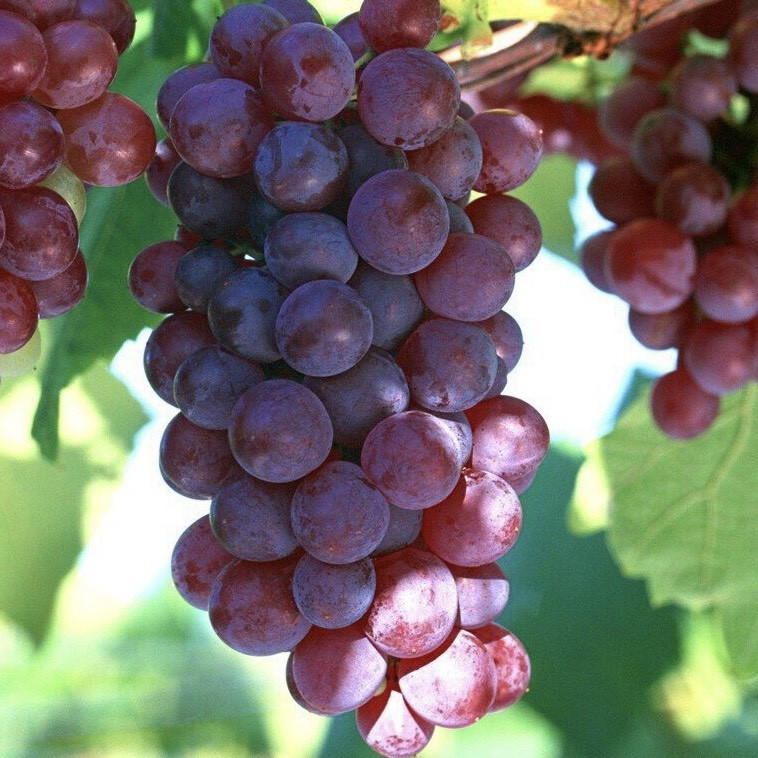
The Red Globe -
The International Fruit Genetics breeding program produced Sweet Jubilee. It's a hybrid of Red Globe and Summer Royal, and it premiered in May of 2001. It was originally asexually propagated by hardwood cuttings near Delano, Kern County, California, in December of 2003. In April of 2004, the propagules were planted and found to replicate true-to-type. IFG Five was granted a US plant patent in February of 2013. Sweet Jubilee grapes are a good substitute for Red Globe seeded grapes. It's a mid-season grape that's picked two weeks before Red Globe. It appeals to growers because of its great output, long storage life, and huge berries.
Sweet Jubilee is a black grape with seeds. The berries are oval-elongate in shape and range in size from medium to enormous. The color of the berries is a rich purple-black, with beautiful striations. The color of the flesh is a translucent pale green, and the texture is firm and crisp. The sweetness is considerable, while the flavor is mild, with a subtle acidic undertone and a 'watery' finish. The peel is easy to bite, has a mild taste, and is barely discernible when chewed, while each berry may contain a small seed that is easily moved aside in the mouth.
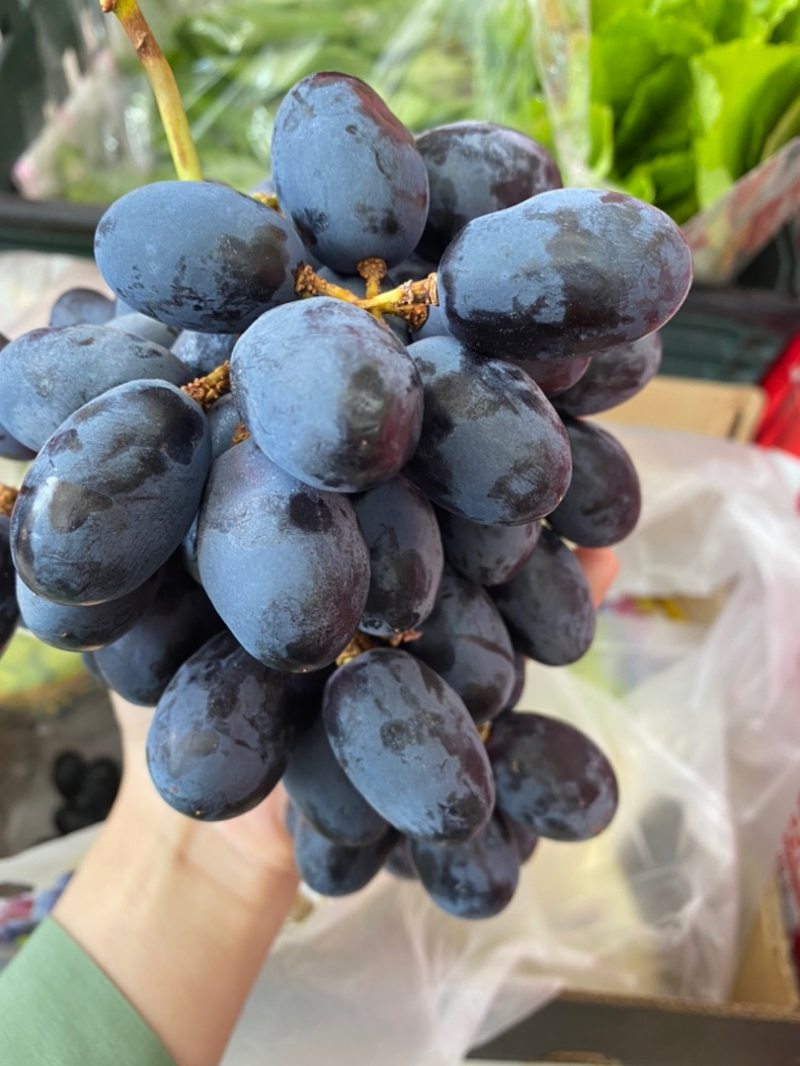
Sweet Jubilee Grapes 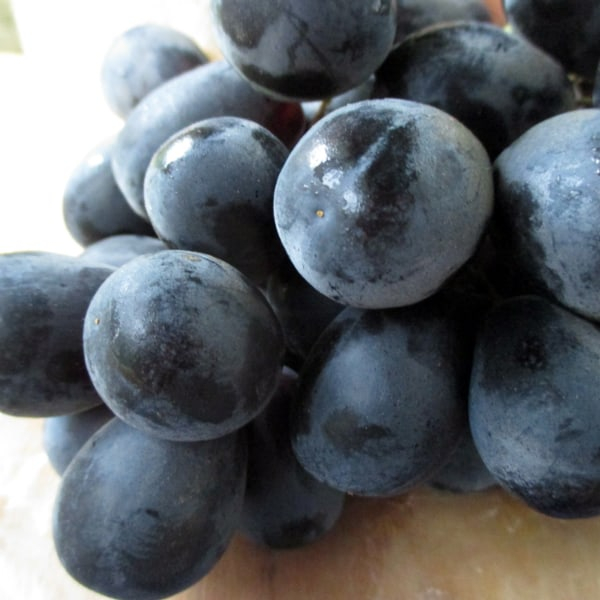
Sweet Jubilee Grapes -
Shine Muscat is a seedless, crisp, and fragrant green grape varietal. It was invented in Japan in the late 1980s and popularized in the early 2000s. It has made a surprise appearance in the Chinese market in recent years, and it is now being grown all across the country.
These grapes are larger than typical in size and form, ranging from oval to oblong. They're grown in medium-sized bunches that are densely packed. The skin is lustrous, silky, and taut. Shine Muscat comes in a variety of colors, ranging from brilliant green to pink to red, depending on the kind. The flesh beneath the surface is watery, delicate, and translucent. Although most Shine Muscat varietals are seedless, some may have small immature seeds. Green grapes from Japan have a crisp texture and a luscious, delicate softness. They have a sweet floral taste of honey, tropical fruits, and musk and are heavy in sugar. The ABV of Shine Muscat is 5-7 percent.
In the excellent product category, it has an average sugar content of 17.0. These grapes are high in fiber, which helps to accelerate digestion. Vitamin C is also present, which decreases inflammation, boosts the immune system, and encourages the creation of collagen in the skin. These pricey grapes also contain potassium, which aids in fluid balance, as well as other minerals like iron, magnesium, and calcium, as well as vitamins B6 and K. They're typically employed in the production of light, fragrant, sweet wines.
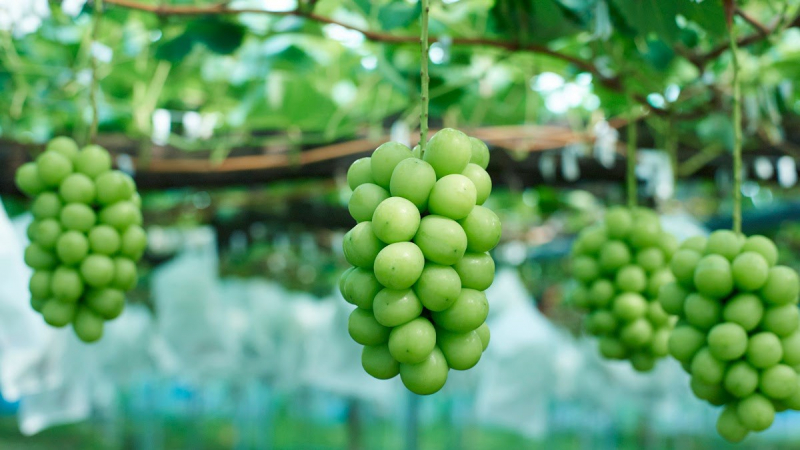
Shine Muscat Grapes 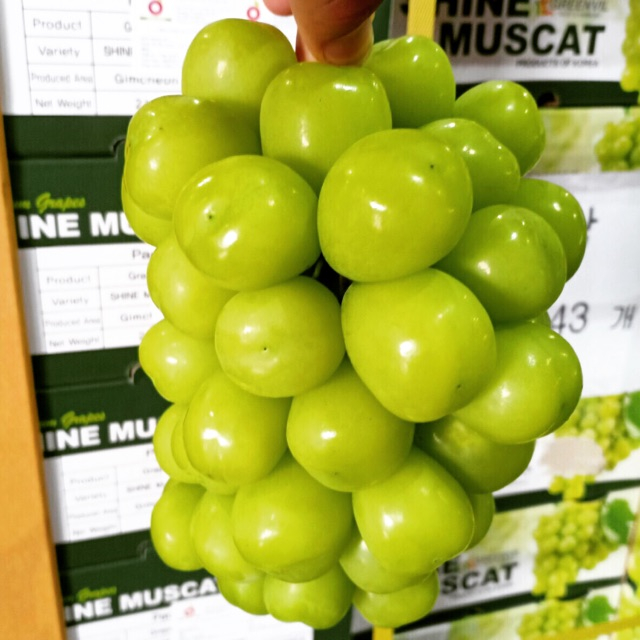
Shine Muscat Grapes -
Kyoho grapes were initially grown in Shizuoka Prefecture in 1937, but it wasn't until 1946 that they were given their current name. Because of their large size and tasty flesh, they are popular in Japan, Taiwan, mainland China, and Korea. The juice is used to make cheap drinks, and they are traditionally served peeled as a treat.
In East Asia, Kyoho grapes are a fox grape (Concord-like) cross. The fruits are blackish-purple or virtually black in color, with huge seeds and luscious flesh that contains a lot of sugar and has a little acidity. Yasushi Ohinoue, a Japanese viticulturist, created the variety in the 1930s and 1940s by crossing the Ishiharawase and Centennial grape kinds. Kyoho, like Concord, is a slip-skin type, which means the fruit's skin may be readily detached from the flesh. The seeds are bitter, and the skin isn't usually consumed. The grape retains some of the Concord grape's flavor characteristics, which are familiar to customers from the taste of most grape jellies and Concord grape juice.
Anthocyanins, colored substances found in the flesh and skin of Kyoho grapes, give antioxidant-like abilities to protect cells from free radical damage, as well as vitamin C, which helps to reduce inflammation and boost the immune system.
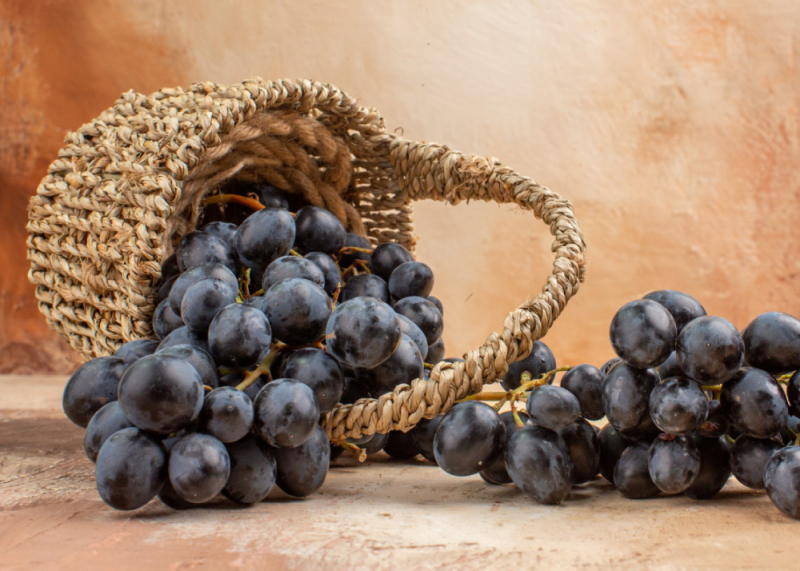
Kyoho Grapes 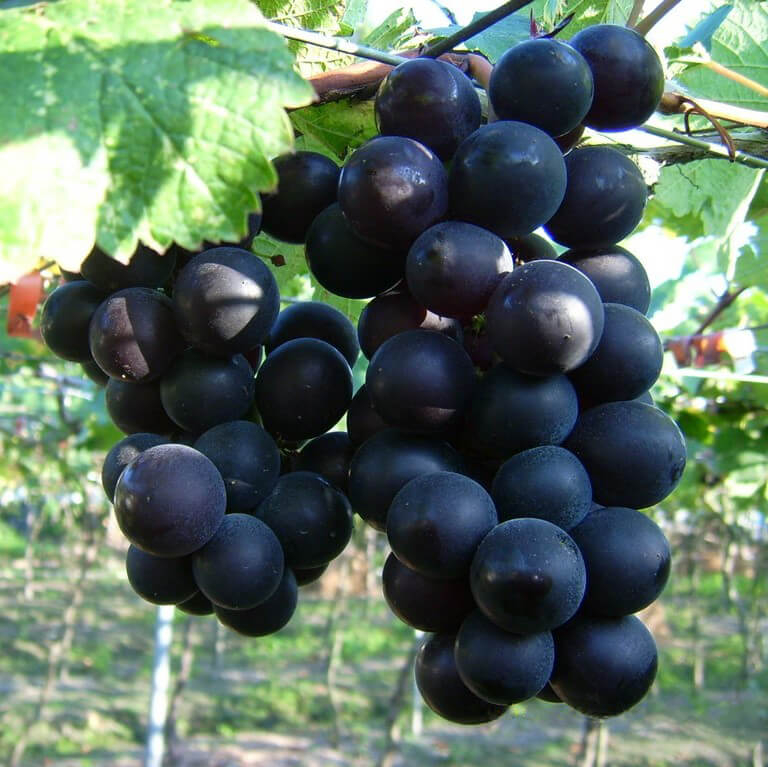
Kyoho Grapes -
Autumn Royal is a late-maturing black seedless table grape created by the USDA-ARS in Fresno, California's David Ramming and Ron Tarailo. The cultivar, which was formerly known and evaluated as USDA selection A97-68, was introduced in 1996 and is the result of a 1981 cross of Autumn Black x C74-1.
Late in the season, the grape 'Autumn Royal' ripens into enormous, delicious purple-black fruits with vibrant yellow-green flesh. The seedless grapes have a thin skin and a wonderful sweet flavor. They also have a rich, sweet flavor and a strong, crunchy texture, making them a great dessert grape. If grown outdoors, this modern, Californian-bred cultivar prefers a warm, sheltered environment.Grapes have health-promoting properties due to their high concentration of bioactive phenolics. Grape juice made from blue grapes (Autumn Royal, Ribier) has more phenolics and antioxidants than juice made from red grapes (Red Globe, Crimson Seedless). The skin is high in antioxidants and contains a lot of phenolics. Blue grapes have higher levels of specific health-promoting phenolics, primarily in the skin portion, which should not be discarded.
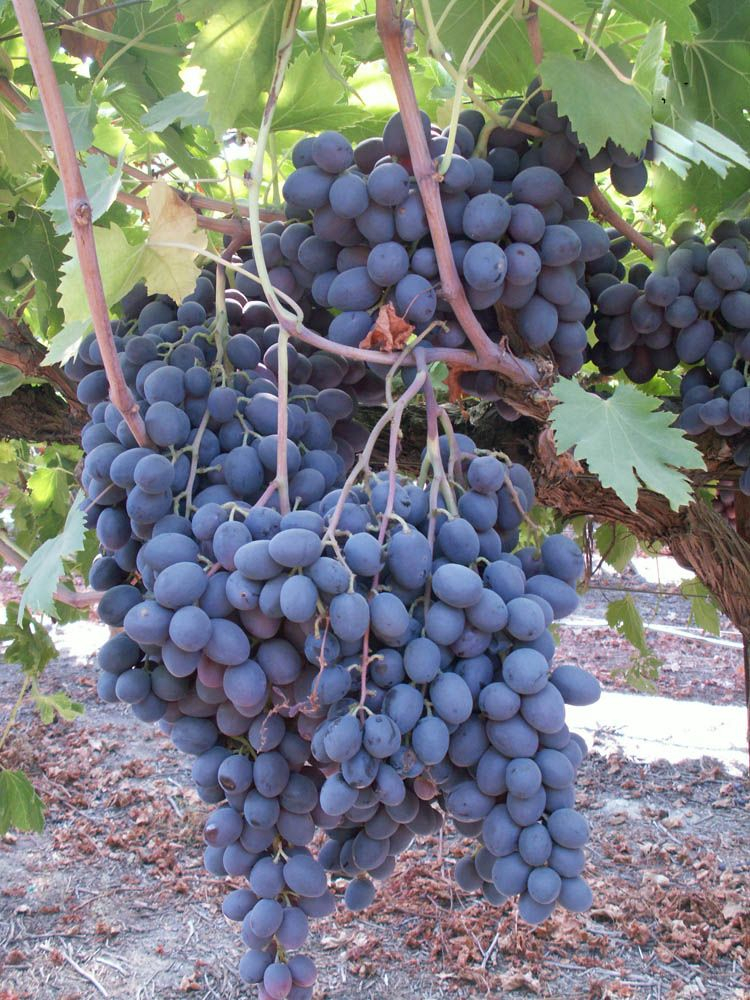
Autumn Royal Grapes 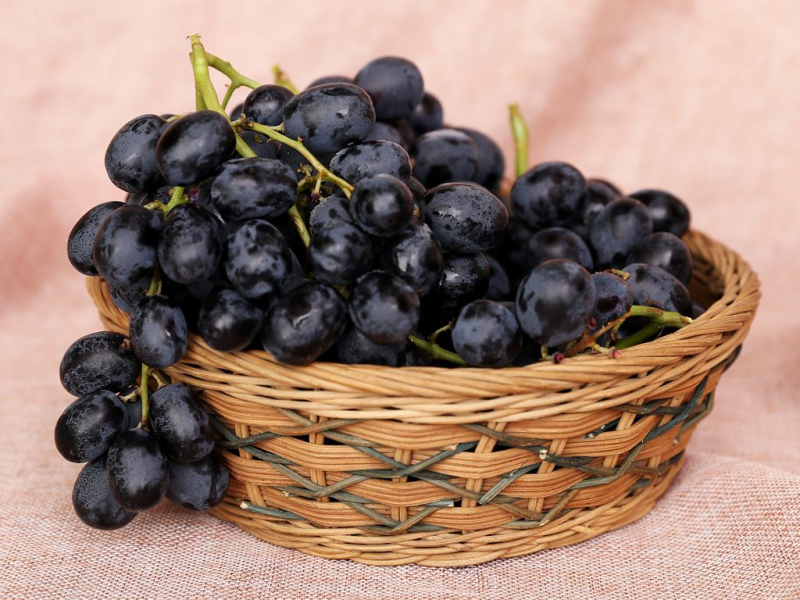
Autumn Royal Grapes -
Riesling is a white grape variety native to the Rhine Valley, which stretches over Germany, France, Austria, and Switzerland. Riesling is a floral, almost perfumed grape varietal with high acidity and flowery, almost fragrant aromas. All of these characteristics combine to make it an excellent grape for winemaking. It's used to make white wines that are dry, semi-sweet, sweet, and effervescent. Riesling, according to Becraft, is "the best meal wine ever invented". Riesling wines are almost never oaked and are usually varietally pure. Riesling was the world's 20th most planted variety in 2004, with 48,700 hectares (120,000 acres), however, it is frequently listed in the "top three" white wine varieties, with Chardonnay and Sauvignon Blanc, in terms of relevance for quality wines.
When rounded out with sugar, Riesling's acidity approaches that of lemonade or orange juice, resulting in a refreshing crisp taste. It has a luscious aftertaste as well. Riesling wines from cool climates tend to have apple and tree fruit flavors, as well as notable acidity that is sometimes balanced with residual sweetness. In warmer areas, a late-ripening cultivar with stronger citrus and peach overtones is grown (such as Alsace and parts of Austria).
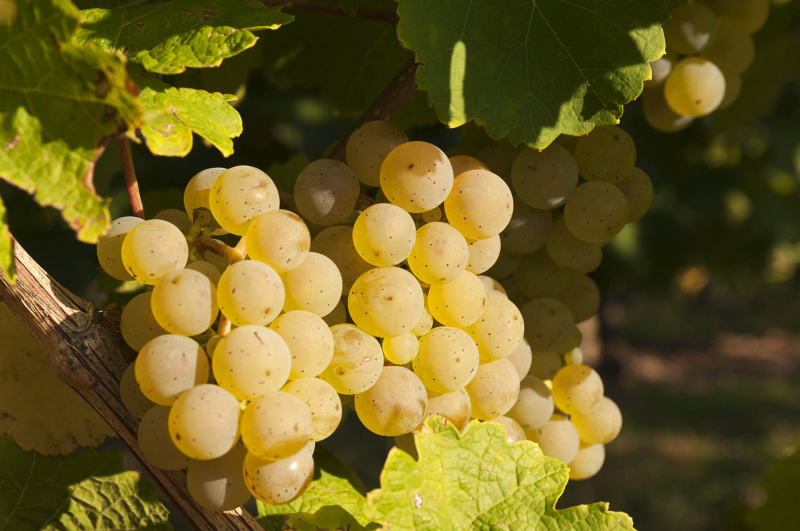
Riesling Grapes 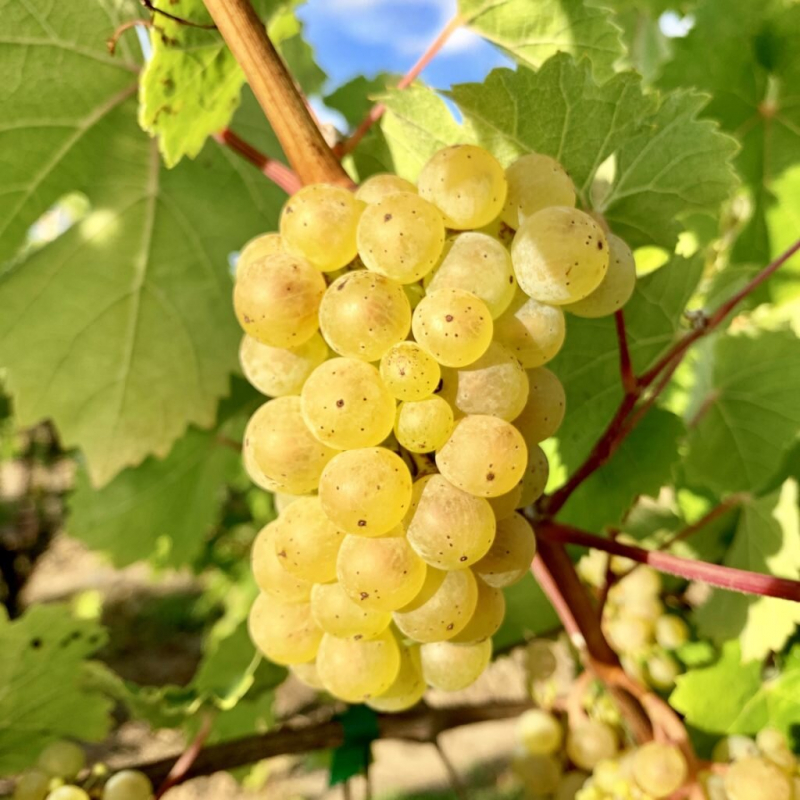
Riesling Grapes












